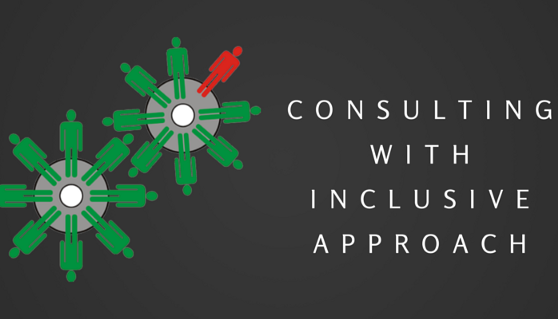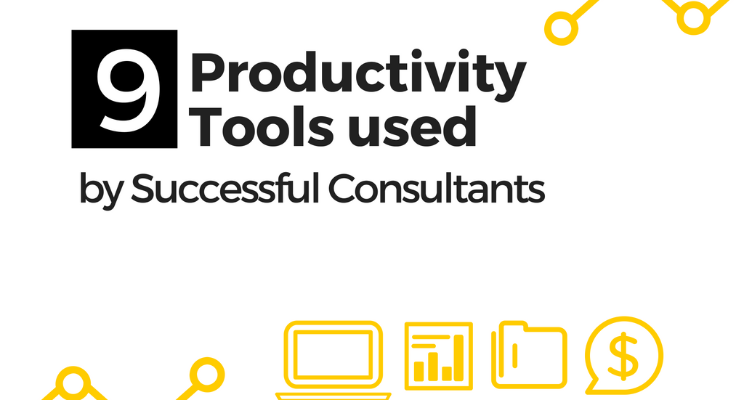Consultancy assignments are generally awarded by the top management. The assignment provides a consultant with specific goals and targets to be achieved for the organization. The very fact that the management hires an external consultant means that the management is very open minded. It means the organization is receptive to new ideas from outside resources.
Now it is up to the consultant to strike a good working relationship with all the stakeholders inside the organization. The consultant should try and become an insider within the organization of his client. He is required to manage his role skilfully and work together with the stakeholders as a single team.
Managing a business is never an easy job. Every managerial position involves delegating the tasks and monitoring the resources. Managers always need to make sure that the individual, group or division is working in tandem with other divisions & departments. Managers should ensure that an individual is working towards achieving the goals of the organization as a whole, as well as doing good for itself and its team.
Consultants can play an important role in managing various stakeholders. Consultants help to build harmony and team spirit across an organisation through using their inclusive approach. A few guidelines to the inclusive approach are listed below:
1. Identifying all the Stakeholders:
In many business organizations, the roles and divisions of stakeholders overlap each other. Their roles get mixed-up between various departments inside the organization. For the assignment currently at hand, the consultant should first identify the stakeholders within each department who will have a key role to play in the assignment.
Many a times, there are people behind the scenes who are not easily identifiable through the hierarchy charts and organizational jargon. The initial time spent in identifying all the related stakeholders will be the main ingredient in achieving good results. It will let the consultant to assign the suitable targets to each stakeholder.
2. Engaging with each Stakeholder:
Once the stakeholders are identified, the process of engagement with them begins for the consultant. The engagement should be from both the sides and information should flow in both directions.
The consultant should first list out the objectives that he is trying to implement in the organization. He should then discuss these objectives with the stakeholders about how they can help the consultant in achieving them. Any doubts or difference of opinions the stakeholder has, need to be listened to carefully by the consultant. Clarifications and explanations as required should be provided so that everyone is on the same plane.
3. Aligning the Goals of Stakeholder with Corporate Goals:
After the requirements are understood by one and all in the organization, the consultant should start listing the goals. The small goals as assigned to each employee must be in line with the previously assigned goals to them. The consultant should strive and remove conflicts and disputes that each stakeholder has in relation to the company. As a leader, the consultant should make sure that stakeholders not lose the sight of their goals.
In any business organization, every employee does already have regular work at hand and goals that are set accordingly. Wherever required, the consultant should modify and alter the goals suitably so that they do not overlap each other. At the same time, he needs to make sure that the goals envisaged are in line with the overall goals of his assignment.
4. Charting the Action Road Map:
Once the role of each stakeholder is individually understood & communicated and ownership is delegated, the consultant should then work from bottom down. He should fit the pieces together to get an idea of how the assignment goals are getting achieved. He should confirm that various milestones at the macro level are being identified and documented.
This phase lets the client identify key contributors to the assignment. The consultant should always try to keep open communication links with all the stakeholders. It helps the consultant to monitor the activities and flow of work.
5. Regular Interaction with Stakeholders:
Continuous interaction with stakeholders including monitoring of the work done is essential. In case anyone is finding difficult to perform his part, the consultant should help him and provide alternative support and arrangements.
If required, the infrastructure may be improved or additional skilled resources may be made available. The work should be done in a timely manner so that the overall objectives and milestones are not jeopardized.
6. Awarding each Stakeholder:
Recognizing the good work done by each stakeholder is an important task as it encourages the stakeholders. This a task that every consultant should perform through as well as at the end of the assignment. This is the best way to leave happy friends in every organization that consultant comes in contact with.
Even in the professional world, the connections and acquaintances are the best assets. More than the results achieved, it is these good vibes that a consultant builds with team members that matter. It also helps the consultant in his practice and repeated hiring for easy or difficult assignments.
7. Successful Completion of Assignment:
The sign off process of the assignment should involve all the concerned stakeholders. All employees involved in the process of implementing the work, will further be required to continue the same work on a regular basis. The role of consultant is to create a process flow and improved organizational structure which will continue in the long-run. Once the process flow is achieved by organization, continuing and maintaining the flow will be the job of the employee stakeholders.
Recurring cost savings and profits made by the company will also be a determining factor in getting the consultant hired again and again by the management. A signing off process should involve not only the management but the actual people who will be doing the work in future for the organization.
To Sum Up
Adopting an inclusive approach in carrying out the tasks helps the consultant make good friends and reference leads for himself within an organization. It also lets the consultant create a sense of solidarity with each person in the organization. He becomes a part of the business family and at the same time he maintains his external status as a consultant.



